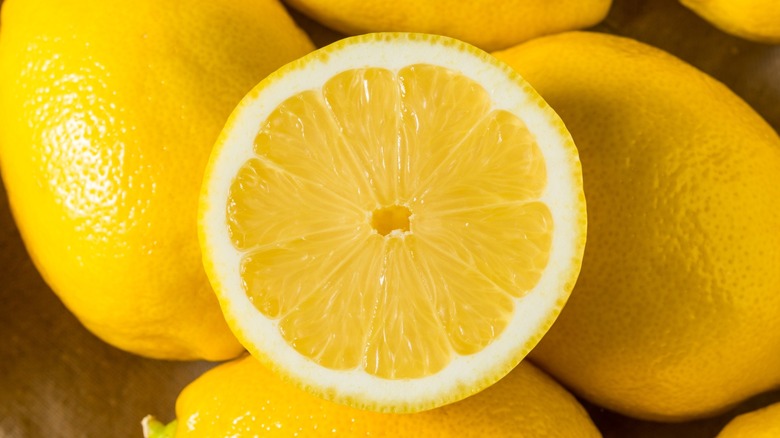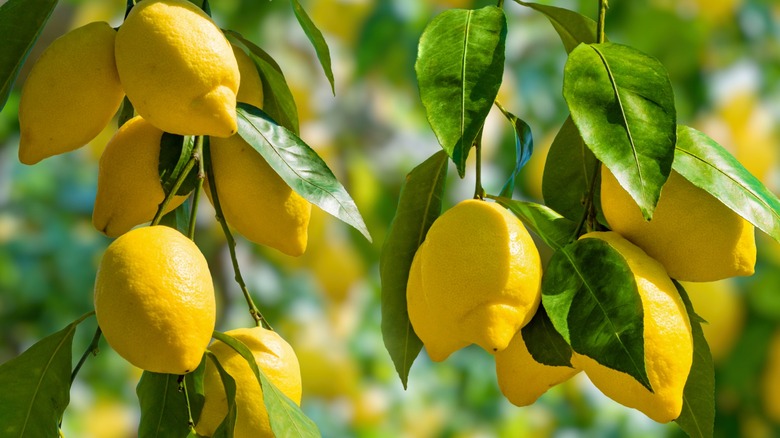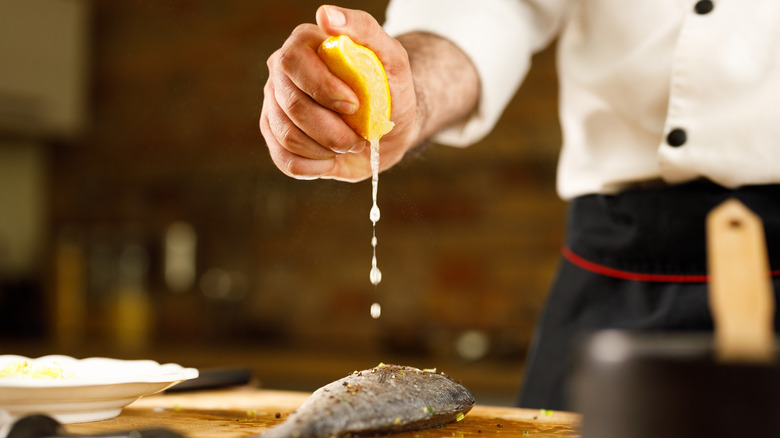What Makes Seedless Lemons Different From Regular Ones?
There are a lot of wonderfully zesty recipes created around the uncrowned king of the citrus world, the lemon. However, anyone who has tried incorporating the sour yellow fruit into a dinner dish has found that the abundance of small seeds in the meat of a lemon can turn making use of its delicious juices into a painstaking process. Fortunately, if picking these bits of inedible plant material out of your fresh-squeezed juice is too much for you to handle, seedless lemons are now standard in the grocery store.
The main difference between the seedless lemon and its seeded sibling is ... drum roll please ... seeds. Though this seems pretty obvious, it is the foremost indicator that allows you to distinguish between the two types of lemon. However, though there are no noticeable flavor discrepancies, there are chemical and environmental considerations that might make some cooks pass over this convenient seedless citrus fruit.
The science of seeds
Despite being a relatively recent standard in grocery store aisles, the seedless lemon has been around for quite some time. Millenia ago, two wild citrus fruits cross-pollinated, and after some human intervention, two varieties of lemon emerged: Eureka and Lisbon. These two fruits are still standard in the lemon world and have remarkably similar genetic profiles. It's common knowledge that many vegetables and fruits used to look different, but the lemon doesn't have the same history of genetic diversity.
This makes breeding new lemon varieties a difficult task — and, as you probably know, most plants reproduce by seeds and are therefore supposed to produce them. So, when you see a seedless variety of a lemon or any other fruit, it's either the result of a genetic mutation or it has been altered by everything from grafting to gamma radiation to stop producing seeds. But when you see these two types of lemon sitting next to one another, you probably won't be able to find the difference.
Discerning between the fruit if it isn't in a conveniently labeled bag is a more scientific process. For starters, pectin, a chemical that serves as a natural thickener when used in dishes like homemade jam, can be found in the parts of the lemon that are generally overlooked — its peel, core, and seeds. Seedless lemons have less pectin, so you should opt for the seeded variety when you're making jam or jelly. While the two types taste identical, some have found that seedless varieties do contain more juice.
To seed or not to seed
Over time, the consensus emerged that there is no taste difference between seedless and seeded lemons. However, one surefire way to negatively alter the flavor of your food is by accidentally letting a bitter seed slip into it while you juice a lemon. Though above-average home cooks have likely found a simple technique to squeeze lemons without dropping seeds, some kitchens probably don't have the proper equipment for this task, such as strainers. Even if you do have these tools, seedless lemons still save you from generating more dishes.
The invention and mass production of the seedless lemon is a modern marvel, but some remain skeptical of this fascinating fruit. In a 2019 interview for The Los Angeles Times, Julia Hauben, a chef who also sells lemons at the Santa Monica Farmer's Market, explained, "... seeds are a sign of natural fruit production, of the presence of pollination and bees." It's therefore possible that consumers can help the bees by sticking to the seeded variety.


